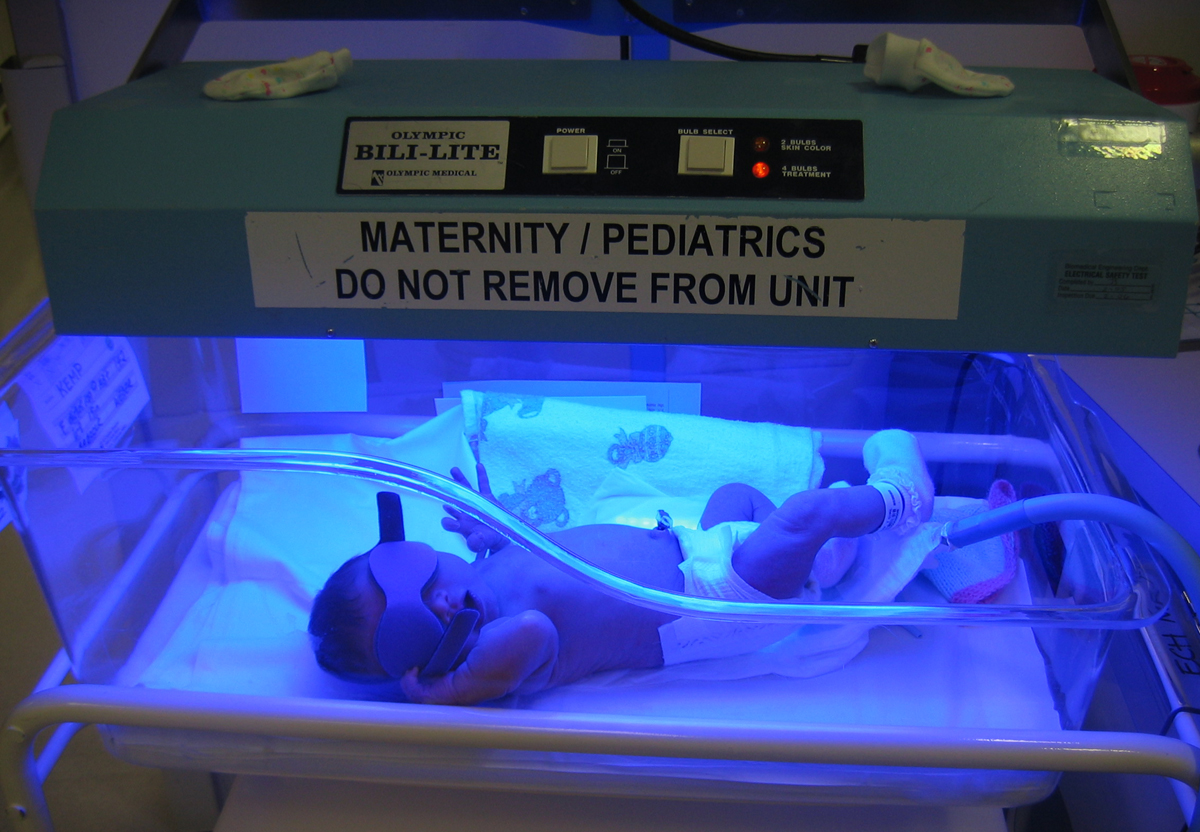|
Pityriasis Lichenoides Et Varioliformis Acuta
Pityriasis lichenoides et varioliformis acuta is a disease of the immune system. It is the more severe version of pityriasis lichenoides chronica. The disease is characterized by rashes and small lesions on the skin. The disease is more common in males and usually occurs in young adulthood, although it has been seen in every age group and every race. It is possible for the disease to go into remission for short periods of time or forever. Causes There is no known cause of this disease; There is some evidence associating it with Parvovirus B19. Diagnosis It is commonly misdiagnosed as chickenpox or rosacea, or misidentified as a form of Staph infection. The most accurate way to diagnose it is by biopsy. This disease has not been known to be life-threatening. Treatment It is not contagious and currently there is no cure for the disease, although the lesions can be treated with phototherapy as well as antibiotics, including erythromycin, azithromycin and tetracycline. Treatment ... [...More Info...] [...Related Items...] OR: [Wikipedia] [Google] [Baidu] |
Disease
A disease is a particular abnormal condition that negatively affects the structure or function of all or part of an organism, and that is not immediately due to any external injury. Diseases are often known to be medical conditions that are associated with specific signs and symptoms. A disease may be caused by external factors such as pathogens or by internal dysfunctions. For example, internal dysfunctions of the immune system can produce a variety of different diseases, including various forms of immunodeficiency, hypersensitivity, allergies and autoimmune disorders. In humans, ''disease'' is often used more broadly to refer to any condition that causes pain, dysfunction, distress, social problems, or death to the person affected, or similar problems for those in contact with the person. In this broader sense, it sometimes includes injuries, disabilities, disorders, syndromes, infections, isolated symptoms, deviant behaviors, and atypical variations of structur ... [...More Info...] [...Related Items...] OR: [Wikipedia] [Google] [Baidu] |
Antibiotic
An antibiotic is a type of antimicrobial substance active against bacteria. It is the most important type of antibacterial agent for fighting bacterial infections, and antibiotic medications are widely used in the treatment and prevention of such infections. They may either kill or inhibit the growth of bacteria. A limited number of antibiotics also possess antiprotozoal activity. Antibiotics are not effective against viruses such as the common cold or influenza; drugs which inhibit viruses are termed antiviral drugs or antivirals rather than antibiotics. Sometimes, the term ''antibiotic''—literally "opposing life", from the Greek roots ἀντι ''anti'', "against" and βίος ''bios'', "life"—is broadly used to refer to any substance used against microbes, but in the usual medical usage, antibiotics (such as penicillin) are those produced naturally (by one microorganism fighting another), whereas non-antibiotic antibacterials (such as sulfonamides and antiseptics) ... [...More Info...] [...Related Items...] OR: [Wikipedia] [Google] [Baidu] |
List Of Cutaneous Conditions
Many skin conditions affect the human integumentary system—the organ system covering the entire surface of the body and composed of skin, hair, nails, and related muscle and glands. The major function of this system is as a barrier against the external environment. The skin weighs an average of four kilograms, covers an area of two square metres, and is made of three distinct layers: the epidermis, dermis, and subcutaneous tissue. The two main types of human skin are: glabrous skin, the hairless skin on the palms and soles (also referred to as the "palmoplantar" surfaces), and hair-bearing skin.Burns, Tony; ''et al''. (2006) ''Rook's Textbook of Dermatology CD-ROM''. Wiley-Blackwell. . Within the latter type, the hairs occur in structures called pilosebaceous units, each with hair follicle, sebaceous gland, and associated arrector pili muscle. In the embryo, the epidermis, hair, and glands form from the ectoderm, which is chemically influenced by the underlying mesoderm th ... [...More Info...] [...Related Items...] OR: [Wikipedia] [Google] [Baidu] |
Parapsoriasis
Parapsoriasis refers to one of a group of skin disorders that are characterized primarily by their resemblance to psoriasis (red, scaly lesions), rather than by their underlying cause. Neoplasms can develop from parapsoriasis. For example, it can develop into cutaneous T-cell lymphoma. The word "parapsoriasis" was formed in 1902. Classification The parapsoriasis groups, described and debated for nearly a century, has spawned a confusing nomenclature. There are some authors who prefer to limit the term "parapsoriasis" to large- and small-plaque variants only. However, the following classification scheme is now generally accepted:Freedberg, et al. (2003). ''Fitzpatrick's Dermatology in General Medicine''. (6th ed.). McGraw-Hill. . * Large-plaque parapsoriasis * Small-plaque parapsoriasis * Pityriasis lichenoides ** Pityriasis lichenoides chronica ** Pityriasis lichenoides et varioliformis acuta * Lymphomatoid papulosis Lymphomatoid papulosis (LyP) is a rare skin disorder. Th ... [...More Info...] [...Related Items...] OR: [Wikipedia] [Google] [Baidu] |
Pityriasis Lichenoides
Pityriasis lichenoides is a form of pityriasis. Types include: * Pityriasis lichenoides et varioliformis acuta * Pityriasis lichenoides chronica Pityriasis lichenoides chronica is an uncommon, idiopathic, acquired dermatosis, characterized by evolving groups of erythematous, scaly papules that may persist for months. Freedberg, et al. (2003). ''Fitzpatrick's Dermatology in General Medicin ... References External links * {{Papulosquamous disorders Lymphoid-related cutaneous conditions ... [...More Info...] [...Related Items...] OR: [Wikipedia] [Google] [Baidu] |
Cutaneous T-cell Lymphoma
Cutaneous T-cell lymphoma (CTCL) is a class of non-Hodgkin lymphoma, which is a type of cancer of the immune system. Unlike most non-Hodgkin lymphomas (which are generally B-cell-related), CTCL is caused by a mutation of T cells. The cancerous T cells in the body initially migrate to the skin, causing various lesions to appear. These lesions change shape as the disease progresses, typically beginning as what appears to be a rash which can be very itchy and eventually forming plaques and tumors before spreading to other parts of the body. Signs and symptoms The presentation depends if it is mycosis fungoides or Sézary syndrome, the most common, though not the only types. Among the symptoms for the aforementioned types are: enlarged lymph nodes, an enlarged liver and spleen, and non-specific dermatitis. Cause The cause of CTCL is unknown. Diagnosis A point-based algorithm for the diagnosis for early forms of cutaneous T-cell lymphoma was proposed by the International Socie ... [...More Info...] [...Related Items...] OR: [Wikipedia] [Google] [Baidu] |
Viktor Mucha
Viktor Mucha (17 April 1877 in Königgrätz – 6 June 1933 in Vienna) was a dermatologist from Austria. He was involved in early syphilis research. He studied medicine at the universities of University of Vienna, Vienna and University of Strasbourg, Strasbourg, receiving his doctorate in 1904. From 1905 he worked as an assistant under Ernst Finger in the department of skin and venereal diseases at Vienna. He was also a physician at the Kaiserin-Elisabethspital (1909–13) and the St. Anna-Kinderspital (1913/14). In 1912 he obtained his habilitation for dermatology and syphilology at the university, becoming an associate professor in 1921. In 1906, with Karl Landsteiner, he developed the technique of dark-field microscopy to visualize the organisms that cause syphilis. Pityriasis lichenoides et varioliformis acuta is sometimes referred to as "Mucha-Habermann disease"; a skin disorder named in conjunction with German dermatologist Rudolf Habermann (1884–1941). [...More Info...] [...Related Items...] OR: [Wikipedia] [Google] [Baidu] |
Tetracycline
Tetracycline, sold under various brand names, is an oral antibiotic in the tetracyclines family of medications, used to treat a number of infections, including Acne vulgaris, acne, cholera, brucellosis, plague (disease), plague, malaria, and syphilis. Common side effects include vomiting, diarrhea, rash, and loss of appetite. Other side effects include poor tooth development if used by children less than eight years of age, kidney problems, and sunburning easily. Use during pregnancy may harm the baby. It works by inhibiting protein synthesis in bacteria. Tetracycline was patented in 1953 and came into commercial use in 1978. It is on the World Health Organization's List of Essential Medicines. Tetracycline is available as a generic medication. Tetracycline was originally made from bacteria of the genus ''Streptomyces''. Medical uses Spectrum of activity Tetracyclines have a broad spectrum of antibiotic action. Originally, they possessed some level of bacteriostatic acti ... [...More Info...] [...Related Items...] OR: [Wikipedia] [Google] [Baidu] |
Azithromycin
Azithromycin, sold under the brand names Zithromax (in oral form) and Azasite (as an eye drop), is an antibiotic medication used for the treatment of a number of bacterial infections. This includes middle ear infections, strep throat, pneumonia, traveler's diarrhea, and certain other intestinal infections. Along with other medications, it may also be used for malaria. It can be taken by mouth or intravenously. Common side effects include nausea, vomiting, diarrhea and upset stomach. An allergic reaction, such as anaphylaxis, QT prolongation, or a type of diarrhea caused by ''Clostridium difficile'' is possible. No harm has been found with its use during pregnancy. Its safety during breastfeeding is not confirmed, but it is likely safe. Azithromycin is an azalide, a type of macrolide antibiotic. It works by decreasing the production of protein, thereby stopping bacterial growth. Azithromycin was discovered in 1980 by the Yugoslav pharmaceutical company Pliva and approved f ... [...More Info...] [...Related Items...] OR: [Wikipedia] [Google] [Baidu] |
Erythromycin
Erythromycin is an antibiotic used for the treatment of a number of bacterial infections. This includes respiratory tract infections, skin infections, chlamydia infections, pelvic inflammatory disease, and syphilis. It may also be used during pregnancy to prevent Group B streptococcal infection in the newborn, as well as to improve delayed stomach emptying. It can be given intravenously and by mouth. An eye ointment is routinely recommended after delivery to prevent eye infections in the newborn. Common side effects include abdominal cramps, vomiting, and diarrhea. More serious side effects may include ''Clostridium difficile'' colitis, liver problems, prolonged QT, and allergic reactions. It is generally safe in those who are allergic to penicillin. Erythromycin also appears to be safe to use during pregnancy. While generally regarded as safe during breastfeeding, its use by the mother during the first two weeks of life may increase the risk of pyloric stenosis in th ... [...More Info...] [...Related Items...] OR: [Wikipedia] [Google] [Baidu] |
Phototherapy
Light therapy, also called phototherapy or bright light therapy is intentional daily exposure to direct sunlight or similar-intensity artificial light in order to treat medical disorders, especially seasonal affective disorder (SAD) and circadian rhythm sleep-wake disorders. Treating skin conditions such as neurodermatitis, psoriasis, acne vulgaris, and eczema with ultraviolet light is called ultraviolet light therapy. Medical uses Nutrient deficiency Vitamin D deficiency Exposure to light at specific wavelengths of Ultraviolet B (abbreviated as UV-B or UVB) enables the body to produce vitamin D to treat vitamin D deficiency. Skin conditions Light therapy treatments for the skin usually involve exposure to ultraviolet light. The exposures can be to a small area of the skin or over the whole body surface, as in a tanning bed. The most common treatment is with narrowband UVB, which has a wavelength of approximately 311–313 nanometers. Full body phototherapy can be de ... [...More Info...] [...Related Items...] OR: [Wikipedia] [Google] [Baidu] |
Immune System
The immune system is a network of biological processes that protects an organism from diseases. It detects and responds to a wide variety of pathogens, from viruses to parasitic worms, as well as cancer cells and objects such as wood splinters, distinguishing them from the organism's own healthy tissue. Many species have two major subsystems of the immune system. The innate immune system provides a preconfigured response to broad groups of situations and stimuli. The adaptive immune system provides a tailored response to each stimulus by learning to recognize molecules it has previously encountered. Both use molecules and cells to perform their functions. Nearly all organisms have some kind of immune system. Bacteria have a rudimentary immune system in the form of enzymes that protect against virus infections. Other basic immune mechanisms evolved in ancient plants and animals and remain in their modern descendants. These mechanisms include phagocytosis, antimicrobial pe ... [...More Info...] [...Related Items...] OR: [Wikipedia] [Google] [Baidu] |






